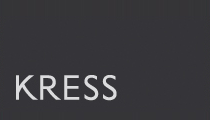![]()
Hosted by University of Maryland, College Park
Washington, D.C. and College Park, Maryland
October 19-21, 2016
With the support of the Getty Foundation and the Samuel H. Kress Foundation, the Department of Art History and Archaeology and the Maryland Institute for Technology in the Humanities (MITH) of the University of Maryland, College Park, presented Art History in Digital Dimensions, a three-day symposium in Washington, D.C. and College Park. The symposium aimed to unite diverse audiences and practitioners in a critical intervention for the digital humanities and digital art history, providing a cogent and inclusive road map for the future.
The symposium began at The Phillips Collection on Wednesday, October 19 with a public keynote lecture given by Paul B. Jaskot, Professor of Art History at DePaul University, on the theme “Digital Art History: Old Problems, New Debates, and Critical Potentials.” On Thursday and Friday, October 20-21, sessions in College Park included roundtables, break-out sessions, lightning round presentations, and plenaries. Topics of discussion included collaborative, trans-disciplinary models of research; the implications of data-driven approaches to art history and the humanities; legal and ethical obligations of scholars and museum professionals engaging art history in the digital world; and the innovative array of objects for study presupposed by digital art history.
The final report of the proceedings, videos of selected sessions, participant biographies, and more, are now available for review. Please consult the website menu for these features.
Art History at the University of Maryland, College Park
The symposium, Art History in Digital Dimensions, is a joint enterprise of the Department of Art History and Archaeology and the Maryland Institute for Technology in the Humanities at the University of Maryland, College Park. The convening had its origins in November 2014, when a distinguished committee of international scholars and curators met on campus for a two-day planning meeting sponsored by the Samuel H. Kress Foundation. This meeting resulted in the design of an innovative, interactive agenda addressing, among other themes, the future of training in the digital humanities, art history, and museology. A collective goal was to establish a blueprint for more effectively integrating digital culture into the worlds of teaching, scholarship, cultural heritage, and museum practice.
The Department of Art History and Archaeology is ideally situated as a locus of engagement and innovation in digital art history. Our Michelle Smith Collaboratory for Visual Culture, a visualization space employing state-of-the art technology for innovative and experimental pedagogical and scholarly undertakings, is a flexible, well-equipped, and expertly staffed facility—one that can ably function as a classroom, conference center, meeting room, and laboratory. On a weekly basis, the Director, Dr. Quint Gregory, and his staff host an abundance of gatherings and demonstrations, including Tech Talks, How-to Sessions, and Open Labs. A dedicated group of graduate assistants, now known as the Digital Innovation Group (or D.I.G.), pioneer investigations and activities that range from online teaching modules, data-driven research, and mapping to videos, podcasts, and concerted public outreach. Last summer, the Collaboratory hosted an inaugural, week-long workshop, “Wading in DAH [Digital Art History] Waters,” which attracted participants from a variety of regional institutions. Based on the strong response to last year’s event, the Collaboratory will once again host this workshop to provide an overview of digital art humanities for “curious beginners.”
![]()

